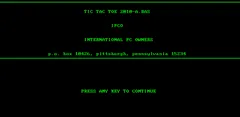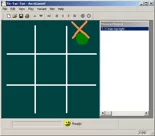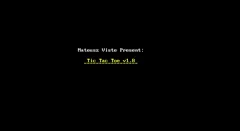Hangman/Tic Tac Toe/Doodle
Moby ID: 164461
Description
Hangman/Tic Tac Toe/Doodle is a compilation of two games and one electronic doodling program. Hangman is the classic pen and paper word guessing game where draws part of a hanged man for each incorrectly guessed word. It can be played with up to four players. Tic-Tac-Toe is another pen and paper classic of getting three in a row in a three-by-three grid and is played with two players or against the computer.
Groups +
Reviews
Critics
Analytics
Identifiers +
Contribute
Are you familiar with this game? Help document and preserve this entry in video game history! If your contribution is approved, you will earn points and be credited as a contributor.
Contributors to this Entry
Game added by vedder.
Game added May 13, 2021. Last modified February 22, 2023.





